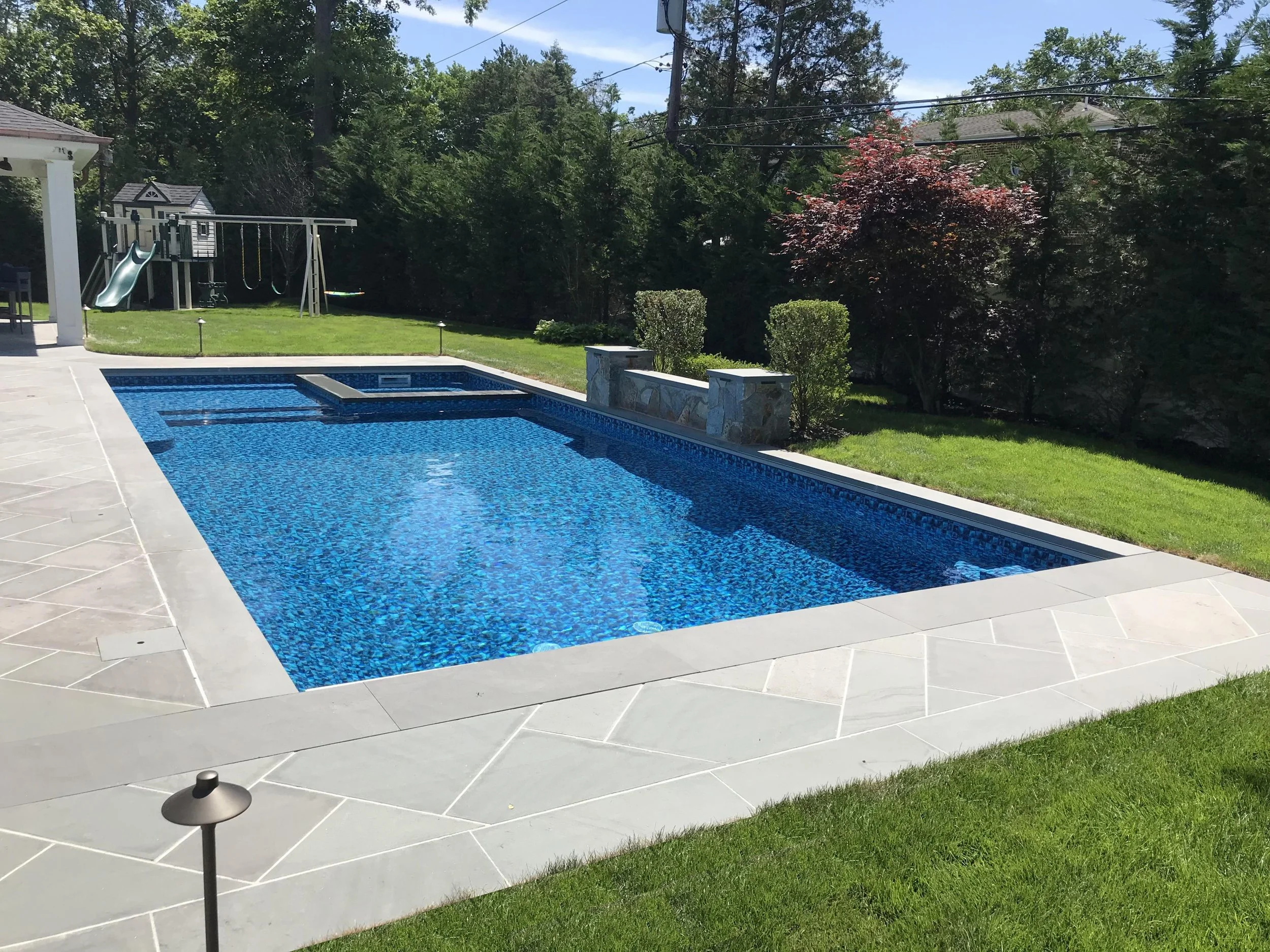As far as inground pools go, there are three types to choose from, each with their own properties, advantages and disadvantages. These include concrete (otherwise known as gunite), fiberglass and vinyl-lined pools. Here we’ll take a look at some of the advantages of installing a vinyl-lined pool in your Riverhead, NY backyard as compared to the other types of inground pools, as well as some of the drawbacks.
Freedom of Design
Vinyl-lined pools offer far more freedom of size, shape and design than fiberglass pools. This is because fiberglass pools are premade in a factory according to specific shape and size blueprints. On the other hand, vinyl-lined pools are fully customizable. The shape of the pool is carved from the ground according to your requirements then reinforced with prefabricated panels or a metal frame. This freedom of design is also allowed by gunite pools, but with a longer installation time and higher cost. The speed with which a customized vinyl-lined pool can be installed makes it a good option for someone with a specific design in mind and who is eager to have construction completed ASAP. Another advantage of vinyl’s versatility is that it offsets the cost of building a large pool. No other design can provide the high size to cost ratio of vinyl-lined pools, allowing you to build the biggest pool at the lowest cost.
Low Installation Cost
One of the biggest advantages to vinyl-lined pools is that when compared to both gunite and fiberglass pools, installation of vinyl pools is far less expensive. Again this makes it a good option for someone who isn’t prepared to wait until they have the lump sum for something else. However, the lining of a vinyl pool does need to be replaced every 5-15 years, so the cost advantages diminish over time. Over the course of its lifetime a vinyl pool can sometimes end up costing as much as concrete pool, with the cost spread out over years.
Wear, Tear, and Repair
Over time, vinyl lining wears out and needs to be replaced. Punctures, scratches and tears in the vinyl can also occur. This kind of damage can be repaired, although these repairs remain visible. A thick, high quality vinyl can help prevent this and increase the time between replacements. While the replaceable liner makes a vinyl-lined pool easily renovated and updated to match a new theme for your outdoor entertainment area, it does require the expense of a new liner as well as the cost of the water needed to refill the pool.
Lower Maintenance Than Concrete Pools
Although less durable than concrete, in certain conditions vinyl-lined pools can be an advantage. Generally, gunite pools are more susceptible to frost damage, cracking and pitting, whereas the flexible lining of a vinyl pool is not affected by changes in temperature and shifting ground. Being smooth and non-porous, the liner comes with the added advantage of being less susceptible to algae than gunite, making everyday maintenance easier and more manageable. The smoother texture is also more gentle on hands feet and skin.
Related: COMMON SWIMMING POOL DESIGN FLAWS


